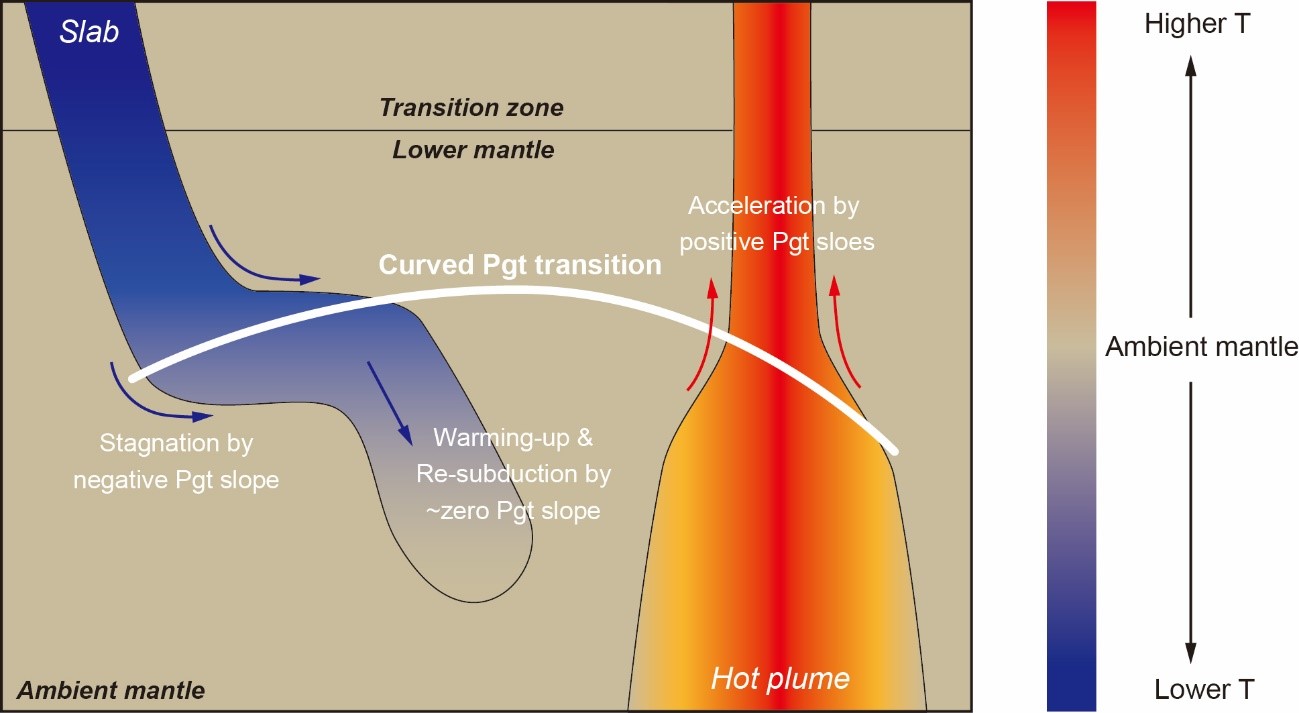
Mid-mantle dynamics explained by the curved post-garnet transition
Takayuki Ishii, Daniel J. Frost, Eun Jeong Kim, Artem Chanyshev, Keisuke Nishida, Biao Wang, Rintaro Ban, Jianing Xu, Jin Liu, Xiaowan Su, Yuji Higo, Yoshinori Tange, Ho-kwang Mao, Tomoo Katsura
Buoyancy of slabs and plumes enhanced by curved post-garnet phase boundary
Nature Geoscience 2023, https://www.nature.com/articles/s41561-023-01244-w
Seismic tomography studies have revealed a distinct style ofnmid-mantle dynamics: Subducting cold slabs stagnate and upwelling hot plumes become invisible at depths of 660-1000 km. A promising interpretation is a high-pressure phase transition of a mantle mineral, because the phase transition depth changes with temperature (Clapeyron slope). A negative Clapeyron slope inhibits mantle convection, whereas a positive slope enhances it.
We focused on the post-garnet phase transition, the breakdown of pyrope garnet (Mg3Al2Si3O12) into bridgmanite plus corundum, which occurs at depths between 660 km and 1000 km. Our advanced multi-anvil technology, combined with in-situ X-ray diffraction, revealed that the post-garnet phase boundary has a downward convex shape: The slope changes from negative to positive with increasing temperature and becomes zero around ambient mantle temperature. Its negative slope at low temperatures produces upward buoyancy in cold regions. In contrast, its positive slope at higher temperatures produces upward buoyancy in hot regions. The curved post-garnet phase boundary could explain various seismological observations in the mid-mantle: Subducting slabs may stagnate between depths of 660-1000 km due to the negative slope, and upwelling plumes may be accelerated due to the positive slope, becoming thinner and tomographically invisible at depths of 660-1000 km.

Mid-mantle dynamics explained by the curved post-garnet phase boundary
Tel: +49-(0) 921 55 3700 / 3766, Fax: +49-(0) 921 55 3769, E-mail: bayerisches.geoinstitut(at)uni-bayreuth.de